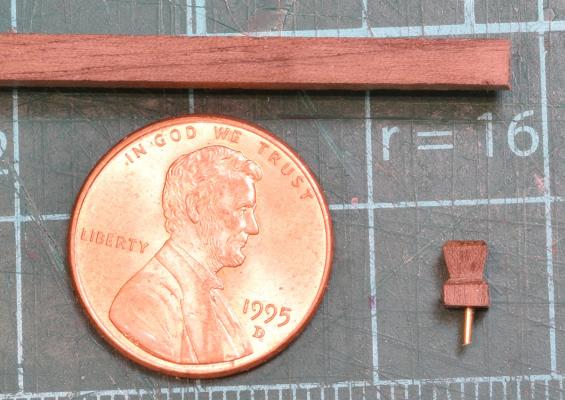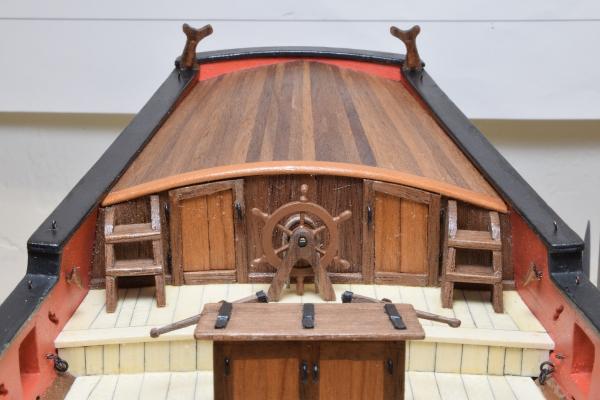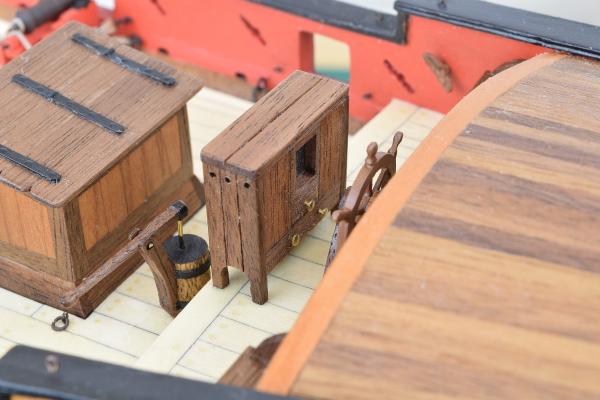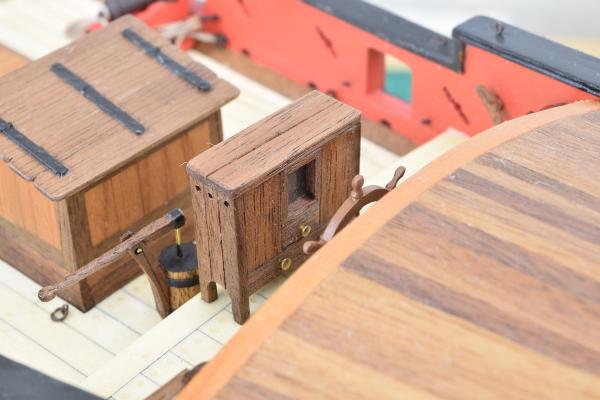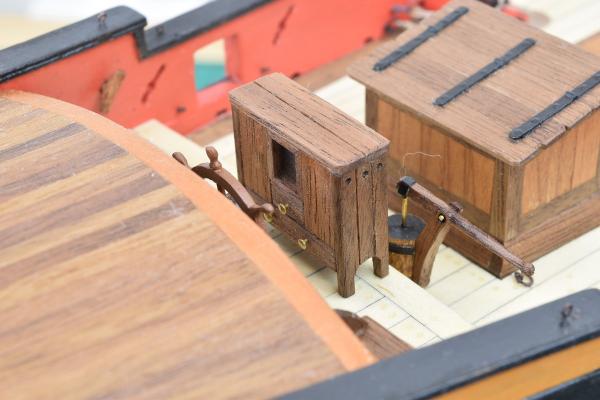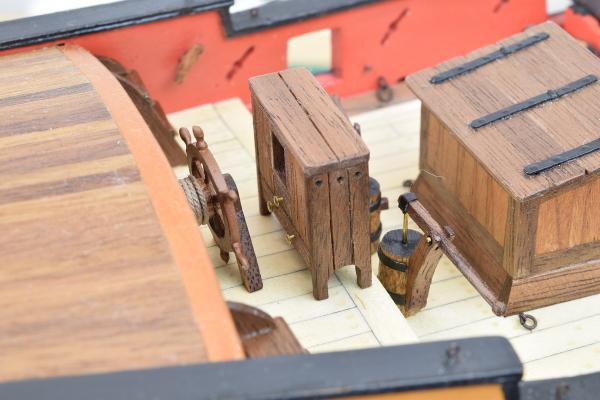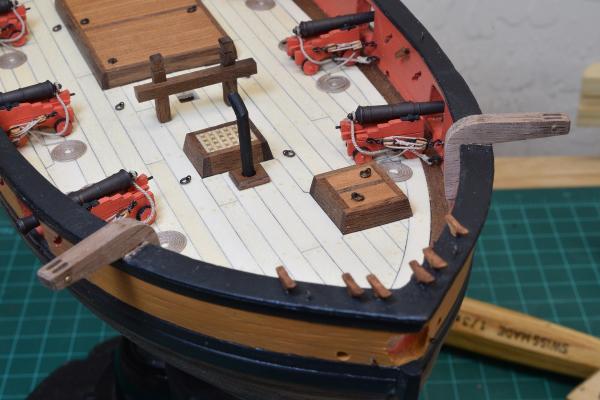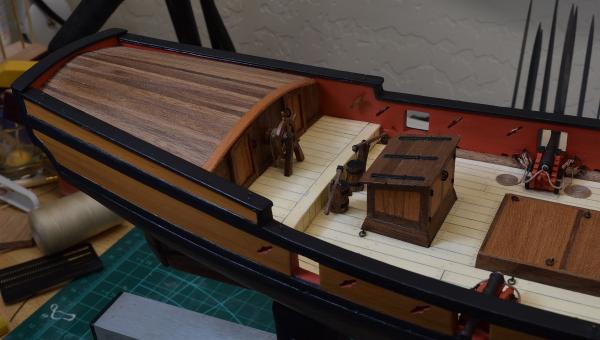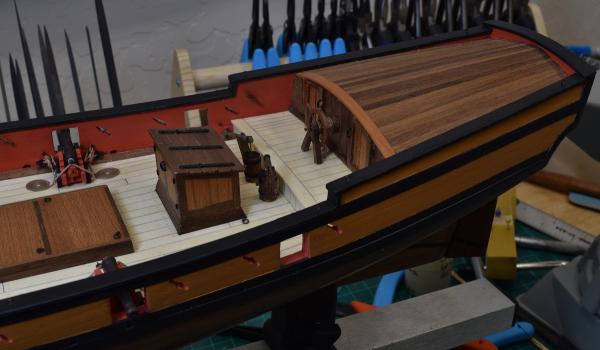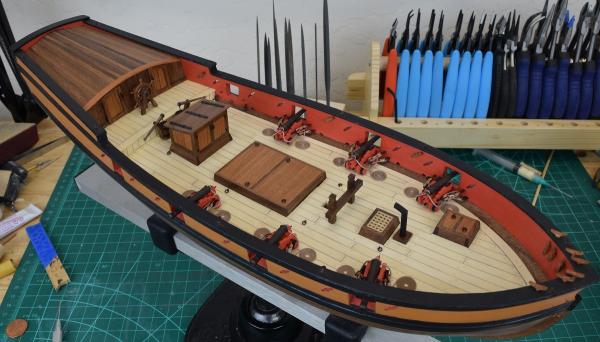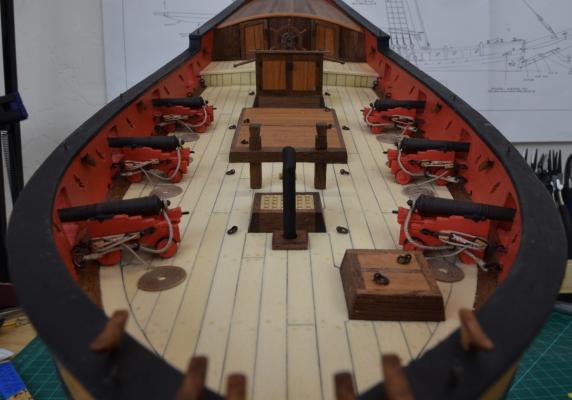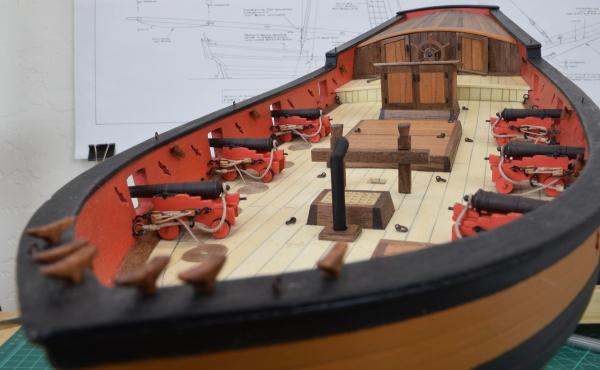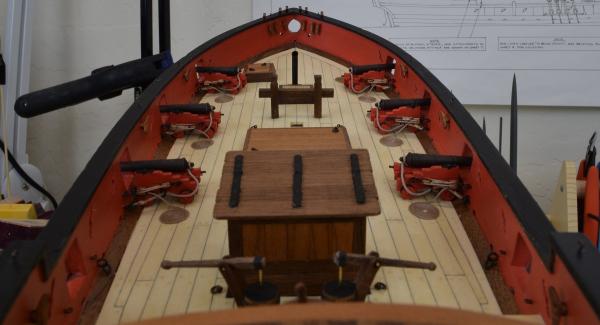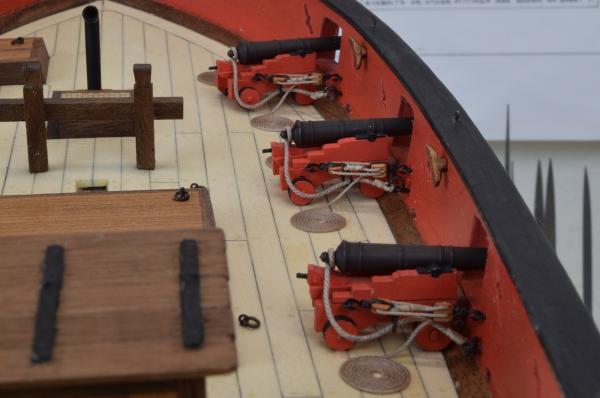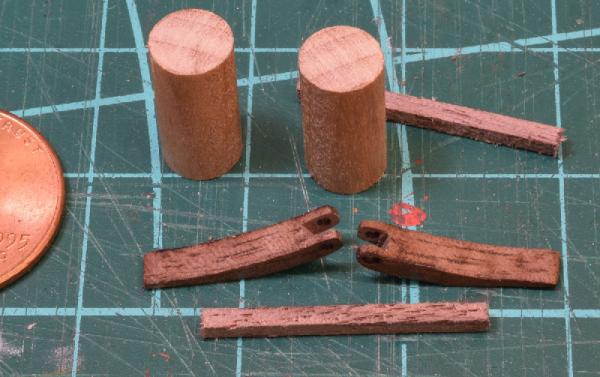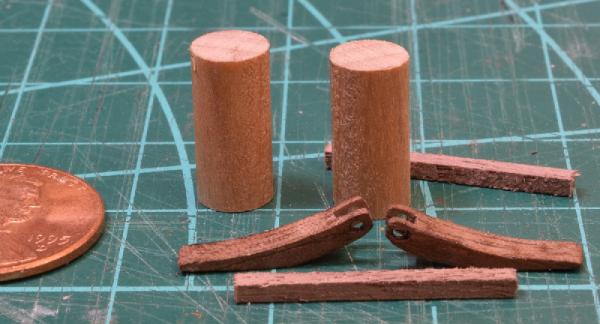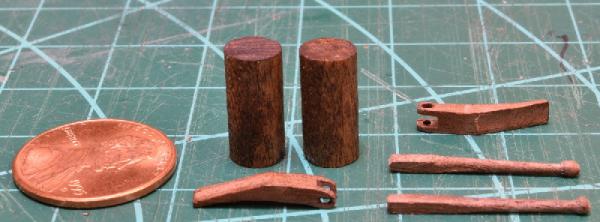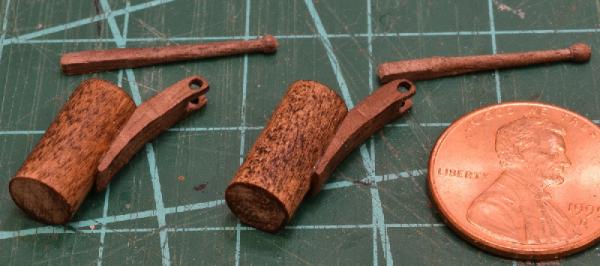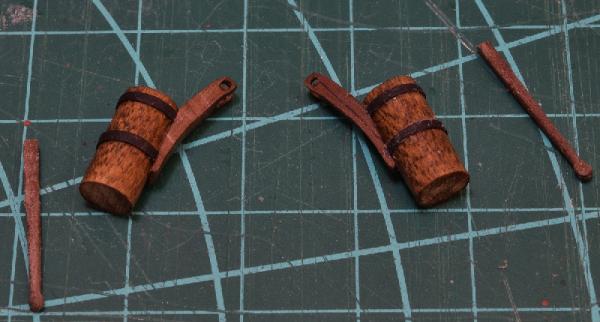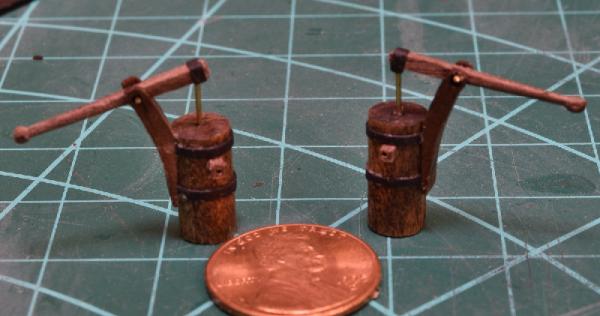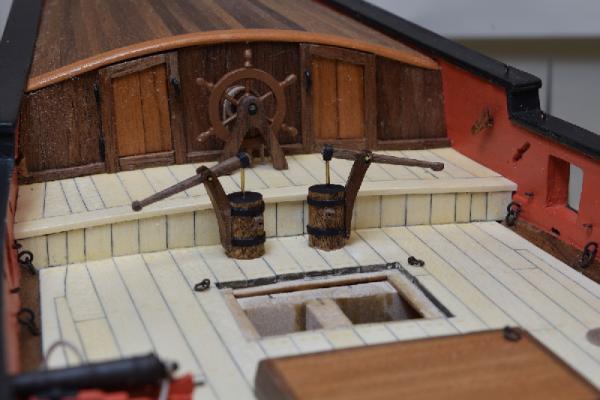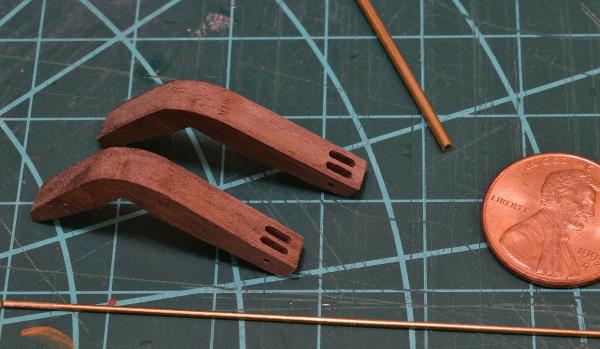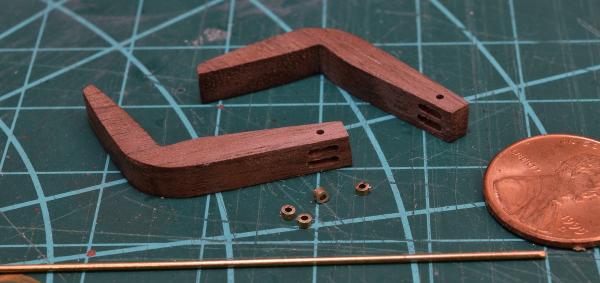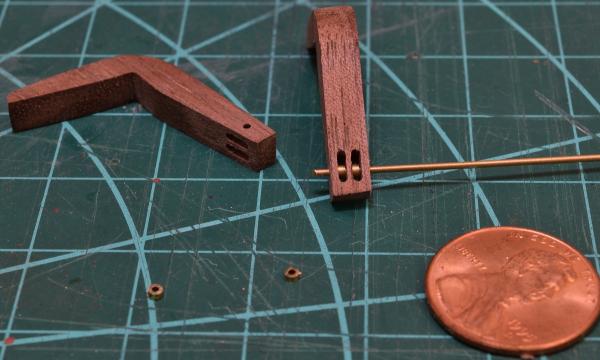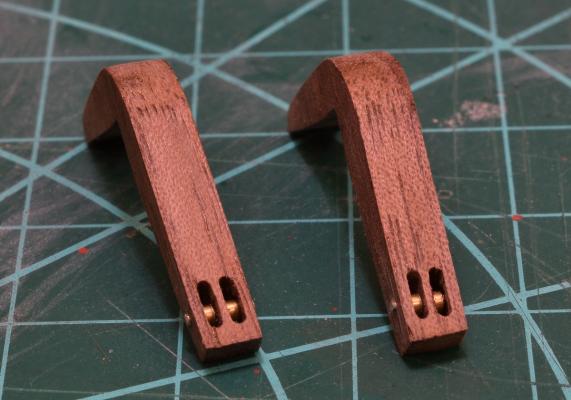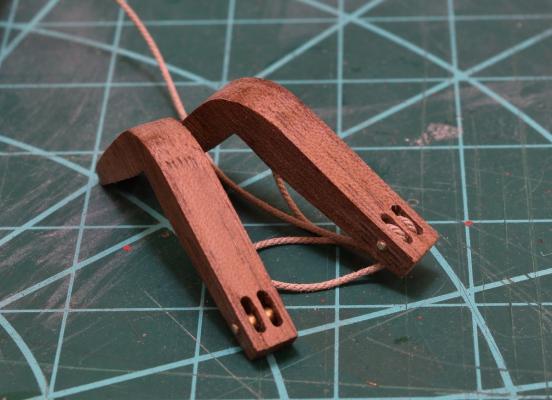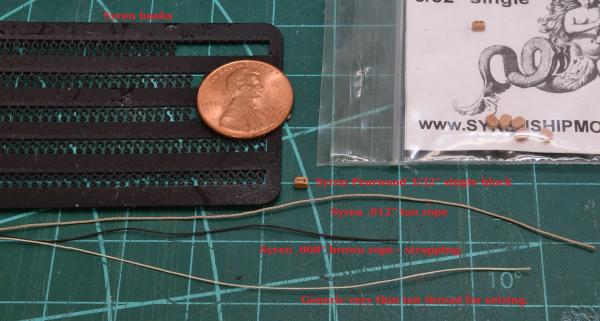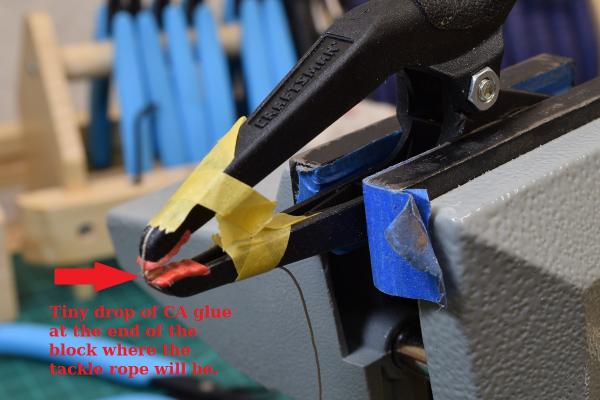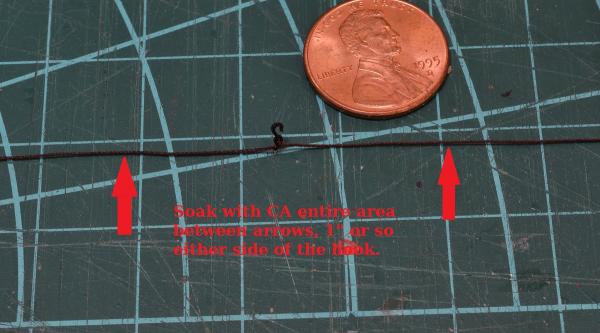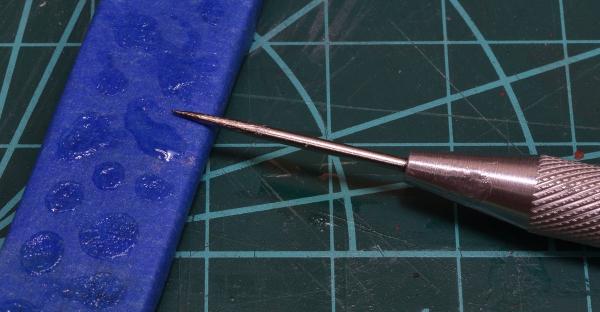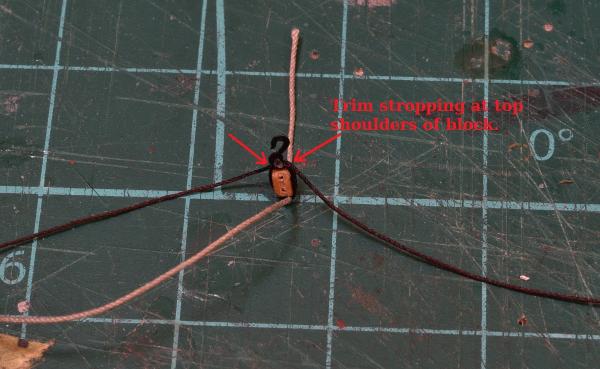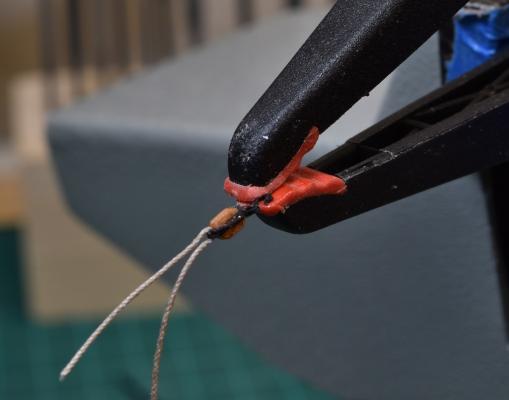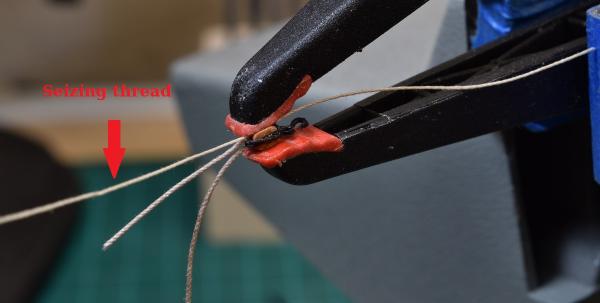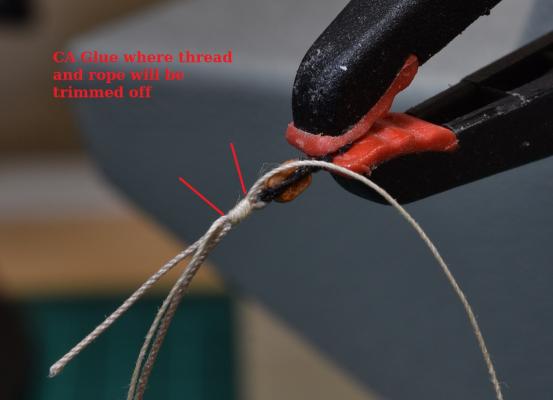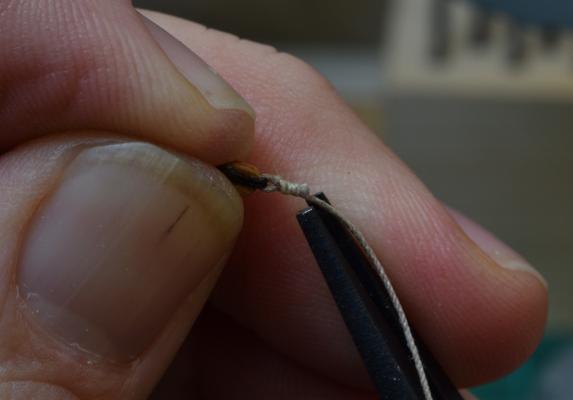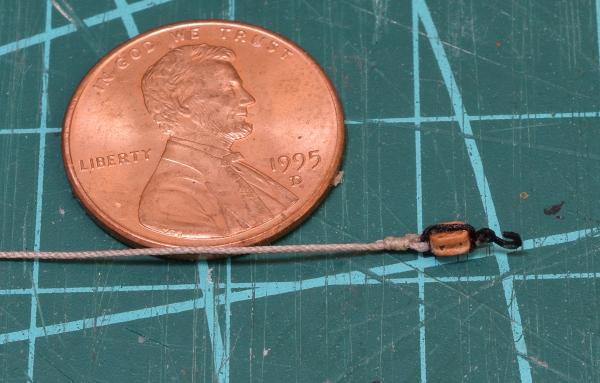-
Posts
2,213 -
Joined
-
Last visited
Content Type
Profiles
Forums
Gallery
Events
Everything posted by GuntherMT
-
Fantastic work on those slats Frank. Going to have to take a good look at them Saturday, as I had no idea that those were built up that way.
-
I'm beginning to think that ship modelling is just an excuse for you to experiment making new tools and jigs.
-
When you are looking at it in person, the scale of the pin-rails doesn't really jump out at you as a problem. Instead how tiny the belaying pins are is what grabbed me! I think once you get them all half (or more) covered in rigging and rope coils, that it will be a non-issue visually.
-
Amazon is one of my best friends. I should own their stock. I found this set very nice, as it comes with 5 of each size, in a nice case that has plenty of space to label each spot with both metric and english measurements for easy reference, and you *will* break those little buggers. http://www.amazon.com/gp/product/B002O0G0ZS?psc=1&redirect=true&ref_=oh_aui_detailpage_o07_s00
-
It's sort of funny Frank, I never actually noticed the kevels when I was actually looking at the ship. It's strange how the eye is drawn to specific features, and others are just missed, yet they really add to the overall look of the project. I look forward to re-inspecting the ship and looking at those kevels tomorrow!
-
After the catheads, I decided to make a timberhead, which came out pretty decent for my first try. Only made the one for now, need to make 5 more. I made this using a barret file for shaping. Next up was the stairs. I made an angle in my little planking jig to make the ends parallel based on the bottom angle on the ladders, and then used the mill to cut groves for the treads. I'm not very happy with how they came out, but they do look much better just staring at the boat than they look in the pictures. I'll ponder whether to make some new ones to replace these. I then made and placed the boom crutches, which can be seen in the above photo, and then assembled the binnacle. Fairly happy with how it came out, but I mis-placed it just slightly, but since it's pinned, I think it will stay here! Shots of the overall ship as it sits now, and close-ups of the binnacle. Still to go - 5 more timberheads, the pedestals for the swivel guns, and the channels and chain-plates. After that we start looking at masts and rigging!
- 831 replies
-
- Armed Virginia Sloop
- Model Shipways
-
(and 1 more)
Tagged with:
-
Larry, I wouldn't worry about this too much until you've gotten rigging on one of them. The belaying pins on my Carmen are super out of scale, but you can't actually see any of the rigged ones since they are almost completely covered by the rope! If you are planning to add rope coils hanging off the pins as well as properly wrapping the rope around the pins to belay it, you may find that your pins are almost completely hidden as well, so the scale won't matter visually at all, as long as you don't place any pins in empty belaying points.
-
The catheads turned into an unexpected issue. The angle built into the laser cut parts appeared to be completely wrong. When the 'flat' on the bottom of the cathead was placed on the cap rail per the plans and instructions, the base was standing proud of the inside of the bulwarks near the deck by about 1/4". Not sure if they are cut wrong, or if I somehow managed to get the angle on my bulwarks that far off of what they should be. The solutions that I could think of were: 1) Cut an angle into the cap rail making the catheads stick up at an angle more severe than that shown in the plans. Issue being that I was not sure the cap rail had enough thickness to actually support that angle, and the base of the catheads on the bulwarks would be lowered, possibly enough to interfere with the waterway. 2) File the bottom of the cathead to make it fit, again causing a fairly steep angle, and presenting issues with how to shape the bottom edge of the cathead once that much of and angle was built into the 'flat'. 3) Modify the catheads by separating them into two pieces right at the corner, and changing the angle. Issue - getting them aligned properly upon re-assembly, and making the join neat enough to not be visible on completion. I eliminated #1 almost immediately, as if it didn't work right, I would have the problem of wrecked cap rails which would be a huge task to replace. #2 seemed to be a problem with the shaping and the angle both. So I went with #3. Using the UMM micro-saw, I carefully sliced the cathead into two pieces, right at, and parallel to the 'flat' where the cathead would sit on the cap rail. I then filed the piece that would go on the bulkhead, a little bit at a time, test fitting until I hit the right angle, and to keep the mating surface reasonable close through the entire process. I then drilled a small hole into the bulkhead piece, and inserted a small brass nail cut to leave just the pointy tip exposed. I then pressed the two pieces together carefully aligning them. The tip of the nail gave me a point to drill the hole into the top piece, and I then replaced the pointy brass nail with a slightly longer one cut to be a pin to help secure the two parts together. I took a picture after the first one was complete, overlaid on the one that was still unmodified to show how much angle I changed. Seemed to work ok, so I cut the other one and followed the same procedure, and then mounted them both on the rail. Right after that I realized I forgot to drill the other hole in the cathead for the rope. Doh! So I carefully drilled out the other hole while supporting the cathead with a finger. Issue defeated. I'll decide after I finish all the knightsheads and swivel gun supports whether these will be painted per the instructions or left natural, as I'll need to do a fair amount of touch-up painting where I removed the paint to get a good joint between the bulwarks / cap rail and the catheads.
- 831 replies
-
- Armed Virginia Sloop
- Model Shipways
-
(and 1 more)
Tagged with:
-
Looking good. You'll love the rope when you get it, and will be happy you made that decision. It was the first (and only) 'change' I made to my first ship, and one that I've never even come close to regretting!
- 440 replies
-
- niagara
- model shipways
-
(and 1 more)
Tagged with:
-
Wow, lots of likes and comments. Thank you all very much. Nigel, the only stain used on the model is the cleats, the barrel of the ships wheel, and the body of the pumps. Everything else is just wood or paint with clear poly. You won't be plagiarizing me, the pumps are built exactly per the kit plans with the exception of using paper for the bands instead of brass, so go right ahead!
- 831 replies
-
- Armed Virginia Sloop
- Model Shipways
-
(and 1 more)
Tagged with:
-
Thank you all for the likes and comments. Now that the pumps are done, I finally installed the companionway in it's permanent home. And then I buckled down and did it. All the guns are rigged. Woo!
- 831 replies
-
- Armed Virginia Sloop
- Model Shipways
-
(and 1 more)
Tagged with:
-
I really need to get a good set of dividers, it's one tool that I see used often, to good effect, and yet I've never managed to pick up a set for myself.
- 440 replies
-
- niagara
- model shipways
-
(and 1 more)
Tagged with:
-
I agree Ken. It's just hard to get a hook in that scale to look right, because they'd be friggen tiny compared to what we can seemingly make. That's why I used the 3mm hooks from Syren, but they are pretty fragile and require a very small rope to thread through the hole. Ditch one, or both, whichever looks best to your eye, since ultimately, that is what matters most! I like the pin location system. I really thought about that, but in the end I couldn't figure out a really good way to locate where the hole in the deck needed to go, so I just glued them directly to the deck. In theory they shouldn't be taking any strain/stress once all the rigging is done, so shouldn't need the pin.
- 440 replies
-
- niagara
- model shipways
-
(and 1 more)
Tagged with:
-
I am gluing my cannons down after the breaching line is secured to the bulkhead, but before the out-haul tackle, since it's located with hooks and I can simply drop it into the eye bolts and then tighten it up. Having the guns secured when I do that is very helpful. Note that I learned the hard way. If your wheels are painted, take out a sanding stick and move the gun back and forth on it to get a clean paint-free wood surface for the glue to adhere to. A couple of my guns I didn't do that with were very easily knocked loose, and it's a LOT harder to sand those wheels when the carriage is firmly attached to the breaching line!
- 440 replies
-
- niagara
- model shipways
-
(and 1 more)
Tagged with:
-
Went back into the workshop and made the pumps. The kit used to include walnut dowel for the pump bodies, but at some point they changed it and only give beech dowels, so they required staining. I used card-stock for the bands instead of brass, because it's so easy to work with and it is painted black anyway. I used the hard brass nails from my Carmen kit for the rods and handle pivots instead of the softer brass rod from the kit. It's slightly smaller diameter, but not enough to really change the visual look at all.
- 831 replies
-
- Armed Virginia Sloop
- Model Shipways
-
(and 1 more)
Tagged with:
-
Actually didn't use the lathe at all for this, I used the mill!
- 831 replies
-
- Armed Virginia Sloop
- Model Shipways
-
(and 1 more)
Tagged with:
-
So instead of finishing the guns on the other side of my ship like I should have today, I totally went off on a tangent, for no real reason other than the idea popped into my head and I felt like it. I apparently have modeling ADD. I played with the Catheads. The base parts are part of the laser cut walnut parts, but the holes for the tackle to go through are not pre-cut of course. The kit instructions are to drill 4 holes, and then using your X-acto blade, cut a shallow slot between the hole pairs in order to make a fake sheave. The slot would be just deep enough for the rope to be flush with the top surface when the rope then runs through the holes. I apparently don't put any value on my time at all, so I decided I was going to make working sheaves with actual little tiny brass pulleys in full slots instead of faking it. First I cut out the slots, and then drilled a hole through the sheave slots for the axle to go. Here you can see the catheads with the other items I used - a brass rod for the axle, and a brass tube to be cut into the pulleys. Next up was cutting little tiny slices off of the tube to make the pulleys. Then sticking the little pulleys into the sheaves and fishing the axle through them. I secured the axle to the outside edge by applying super-glue and working the axles a bit to allow capillary action to pull the glue into the catheads. Complete! Then I fished a .021" rope through one of them to test it. Works perfectly. Such a huge waste of time for the heck of it on something that nobody will ever see once it's rigged, but hey, I had fun!
- 831 replies
-
- Armed Virginia Sloop
- Model Shipways
-
(and 1 more)
Tagged with:
-
The AVS is 1:48 scale, but for the rope and tackle I am using the "It looks about right" scale. I have no clue if they are correct for the scale, but they are about 10 million times better than the hilariously oversized blocks provided in the kit for this.
- 440 replies
-
- niagara
- model shipways
-
(and 1 more)
Tagged with:
-
Ken, Rather than clogging up your build with a giant post with a bunch of pictures on how I'm doing something, I added it to my build log. Here is a direct link to that post for you - http://modelshipworld.com/index.php/topic/8085-armed-virginia-sloop-by-gunthermt-model-shipways-scale-148/?p=328294
- 440 replies
-
- niagara
- model shipways
-
(and 1 more)
Tagged with:
-
I had a request to document my method of stropping the single block to include the tackle rope, so this post is a pictorial step-by-step of how I do that. The materials. I am using Syren 5/32" Pearwood single blocks, Syren 3mm hooks, some generic tan thread I found that is very thin for seizing, .008" Syren brown rope for the stropping, and .012" Syren tan rope for the tackle line. I cut about 8" of .012" line for the tackle rope, this leaves me with about an inch or so left over after creating the rope coils on deck and an extra inch or so for the block end to make it easier to work with while seizing. I cut 6" or so of thread for the seizing to give me plenty to work with. If you leave it too short it can be hard to grab while wrapping the seizing, and it's thread, the spool is something silly like 300 yards long, I'll never run out and if I do it's cheap. For the same reason (ease of working) I cut 5" or so of the brown rope, even though less than an inch is actually used in the strop. 1) I put the single block into a clamp that I secured in my vise, and then tape down the tackle rope to the clamp across the base of the block. Before I tape the rope, I apply a very tiny dab of CA glue to the base of the block where the rope will cross it. I use the tip of a steel X-acto punch tool to apply the glue from a drop on a piece of tape. 2) I thread the stropping rope through one of the hooks and tie a single knot in the rope *before I cut the hook free from the sprue*!! I lost about half the hooks I tried to thread to the floor when I was trying to hold these tiny hooks and thread them when cutting them free first. Once I have a hook tied to the approximate middle of the brown rope, I soak about 1" or so on either side of the hook in CA glue (from the same drop on the tape I used above). 3) I don't really know how to capture a photo 'in progress' of the next step, but I'll try to describe it. Take the hook on the rope and put it in behind the block, centering the hook on the top of the block. Pull the rope down both sides of the block, cross them across the bottom of the block where the tackle rope is, and then continue up the other side of the block and then back across the top where the hook is. This will give you a double rope strop all the way around the block. Continue back down to the base, and then hold them steady for 30 seconds or so to let the CA take a good set. If the ropes are not even on the sides of the blocks, it is easy at this point to use the back edge of an X-Acto blade to push them into place. You can add glue at this point if needed, or in the next step. 4) Remove the block from the clamp. At this point if everything is looking good, you can trim the rope at the top shoulders of the block. If you need to adjust things, it's pretty easy with either the X-Acto blade or a very small set of pliers or whatever tool works to prod the rope into place. Add another dab of glue if anything comes loose and squeeze it into position with the pliers. 5) Using small flat blade pliers I then squeeze the tackle rope into shape at the base of the block. It will be stiff because of the CA. I also use the pliers to flatten down the ends of the trimmed stropping ropes, adding a tiny dab of CA if needed to get rid of the cut ends. 6) Put the stropped block back into the clamp, but this time clamp in the seizing thread with an inch or more going past the block. 7) To seize the tackle rope, form a loop with the seizing thread, with the top coming back up to the clamp. Leave the loop large enough to be able to thread the other end back through it, which is why I cut this thread longish. Take the top of the thread and while holding everything else in your left hand (or right hand if you are one of 'those' people), and wrap the thread around itself, starting at the block and working away from it. This part takes practice to make it work, as you really can't watch it, as it's all happening between your holding fingers to keep a tight seizing. I use only about 5 wraps on these tiny blocks or the seizing looks way too big. Once you have 5 wraps, take the loose end, and thread it through the loop between your fingers, and pull it firmly until it goes through your fingers so that it's tight. Bent nose tweezers can be helpful for this. 8) Now remove the assembly from the clamp, but keep holding everything with your left hand. Using your other hand, grab the end of the thread that was clamped with the block, and start pulling it. This will pull the loop closed between your fingers. Feel for the loop to close up against the seizing, and then pull the back of the thread tight again. Now you can stop holding with your left hand, and see how the seizing looks. If needed, slide it up closer to the block now, and play with the bottom thread to tighten up the seizing coils. Then finally, pull the top thread firmly until it completely pulls the loop inside of the seizing. You should end up with something like this (the practice part is important here, it took me doing a bunch of these before they didn't look a total mess). Now apply dabs of CA glue to the three points that will be trimmed - both ends of the seizing, and the extra tail on the tackle rope. Trim them off with nippers or nail clippers or whatever you have that will trim very close. 9) Dab a bit of CA on the trimmed ends, and using the flat nose pliers, crimp them to make them blend into the overall seizing. I use a very fine Xuron needle nose plier for this. No substitute for good quality tools I've learned. I get more use out of a single $25 plier than a full set of pliers from Lowe's that are cheap. 10) It's done! Hope others can find this helpful, it's a system that works well for me, when other systems that I've read and tried just didn't seem to click for me.
- 831 replies
-
- Armed Virginia Sloop
- Model Shipways
-
(and 1 more)
Tagged with:
-
Chuck's rope - http://www.syrenshipmodelcompany.com/miniature-rope.php Will do at least one block and take photo's this afternoon.
- 440 replies
-
- niagara
- model shipways
-
(and 1 more)
Tagged with:
About us
Modelshipworld - Advancing Ship Modeling through Research
SSL Secured
Your security is important for us so this Website is SSL-Secured
NRG Mailing Address
Nautical Research Guild
237 South Lincoln Street
Westmont IL, 60559-1917
Model Ship World ® and the MSW logo are Registered Trademarks, and belong to the Nautical Research Guild (United States Patent and Trademark Office: No. 6,929,264 & No. 6,929,274, registered Dec. 20, 2022)
Helpful Links
About the NRG
If you enjoy building ship models that are historically accurate as well as beautiful, then The Nautical Research Guild (NRG) is just right for you.
The Guild is a non-profit educational organization whose mission is to “Advance Ship Modeling Through Research”. We provide support to our members in their efforts to raise the quality of their model ships.
The Nautical Research Guild has published our world-renowned quarterly magazine, The Nautical Research Journal, since 1955. The pages of the Journal are full of articles by accomplished ship modelers who show you how they create those exquisite details on their models, and by maritime historians who show you the correct details to build. The Journal is available in both print and digital editions. Go to the NRG web site (www.thenrg.org) to download a complimentary digital copy of the Journal. The NRG also publishes plan sets, books and compilations of back issues of the Journal and the former Ships in Scale and Model Ship Builder magazines.




